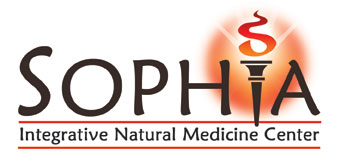Matters of the Heart: An Integrative Chinese Medicine Approach to Cardiovascular Health
As a seasoned natural medicine practitioner, I have observed over the years the baby Boomer population and how they age. There is an angst that comes from experiencing our own mortality that grows with each decade of later life. I often hear the reports from my patients about the health assessment done in those milestone years such as the colonoscopy, mammograms, blood tests, stress tests, PSA testing and the list go on and on. The purpose of this testing is purported as early detection of disease and disease prevention, but I have learned some sobering facts about the effectiveness, or lack of effectiveness, should I say of all these screenings. Of particular concern to me are those tests dealing with cardiovascular disease.
According to John Hopkins School of Medicine, Cardiovascular disease is the cause of more deaths than cancer, chronic lower respiratory diseases, and accidents combined. It is a myth that heart disease is in men only. In fact, cardiovascular diseases are the number one killer of women, as well. And the latest data tell us that about 1/3 of all cardiovascular deaths could be simply prevented. To make matters worse, conventional testing and treatment includes decade old screening that has been found to be relatively useless. Dr. David Newman, Director of clinical research at Columbia University was quoted “It appears that flipping a coin would be a more sensitive mechanism for detecting coronary artery disease than relying on a stress test.” Also, according to Charles McGee, MD, author of the book Heart Frauds: Uncovering the Biggest Health Scan in Medical History, conventional treatment for heart disease like coronary bypass surgery, balloon angioplasty, and cholesterol-lowering drugs do not work and are completely unnecessary.” And according to Princeton Longevity Center, “The major limitation of all cardiac stress tests is that it requires a high level of blockage in one or more coronary arteries to produce an abnormal result.” The amount of blockage sits around 65-70% before a stress test will be abnormal. As practitioners, we can do better for our patients.
We know that early detection of risk and early intervention is the key. We also know that there have been successful natural interventions that will work when the disease is caught early. So what can you do to detect problems before you have a 70% blockage in your heart, find out what the real risk is AND more importantly, what can you do about it? Well, I have uncovered some little known testing tools and procedures and applied our natural treatments and it works.
One of the most important first steps in the process of recovering or disease-proofing your heart is to diagnose the problem. This does not mean a conventional textbook diagnosis, but one that addresses the source of any health issues and identifies risk of the published diseases. Here are some risk detection strategies that I have integrated and used with thousands of my patients:
1. The Chinese medical diagnosis. For centuries, Chinese medicine has used one’s own body to identify areas where oxygen and blood are not properly circulating. This includes observations, palpation and complex identification of abnormalities in one’s pulse. Specifically, the location of the radial pulse on the left hand near the wrist crease. Decreased flow or a “bird beak” type pulse in this location can be an indicator of heart malfunction. Also, observation of the tongue and veins under the tongue can give us great details. Even though, Chinese doctors wrote about these relationships centuries ago, a study in the journal BMC Oral Health, a relationship between hypertension and the blue veins under the tongue was found as well as another study that found a relationship between the observation of the tongue and Coronary Vascular disease.
2. Pulse pressure. Using a simple test of blood pressure and calculation of the upper and lower numbers can tell us if you are at high risk of hardening of the arteries. Typically, if you subtract the top blood pressure number (systolic) from the lower number (diastolic) there should be no more than 40 points difference. Even a 10 point difference was found to increase the risk of heart disease by 20% and may indicate hardening of the arteries.
3. Pulse Wave Velocity (PWV) and Digital Pulse Analysis. This is an exciting, non-invasive method of looking at heart physiology that is backed by more than 25 years of advanced research in medical physics. By using something called pulse oxymetry and advances in software, this system can measure the risk of arterial stiffness and blood flow. According to the Framingham Heart Study and published in the medical journal “Circulation”, adding PWV technology to assessment lead to significant reclassification and identification of those at risk and led to better interventions.
These are just a few of the tools we use in an advanced integrative medical practice. Some other tests you should know about are the Boston Heart Diagnostics which is the best of the best at looking for inflammation and various damaging cholesterol particles that can harm your heart. We also include Medical Infrared Thermography, which looks for inflammation anywhere in the body, especially carotid arteries and breast cancer risk, hormone testing for excess estrogen or deficient hormones and various other tools that will give us far more information than the basic stress or cholesterol test.
The best part of all this testing is that when the problem is uncovered, we can develop a specific plan to restore function and reverse risk. One tool that may not be considered, but should is acupuncture. By inserting fine pins into specific points on the body, we can increase flexibility in the vessels (it increases NOS), reduce blood pressure, increase blood flow and stabilizes hormones in the nervous system that damage the heart, such as cortisol and adrenaline. We can strengthen the heart muscle itself and increase output through the entire system. Also, with the use of targeted supplements and herbal formulas, inflammation can be reduced and coronary plaque can be addressed. For example, the herb, Hawthorn or crateagus has been shown to lower blood pressure and increase blood flow in heart failure patients. There are many, many other usual treatment strategies that are safe, non-invasive such as plenty of essential fats, CoQ10 and more. The key is to have an organized assessment and know the tools that can help. Seek out professionals who are skilled in the use of these tools and let them design a program that addresses your needs.

